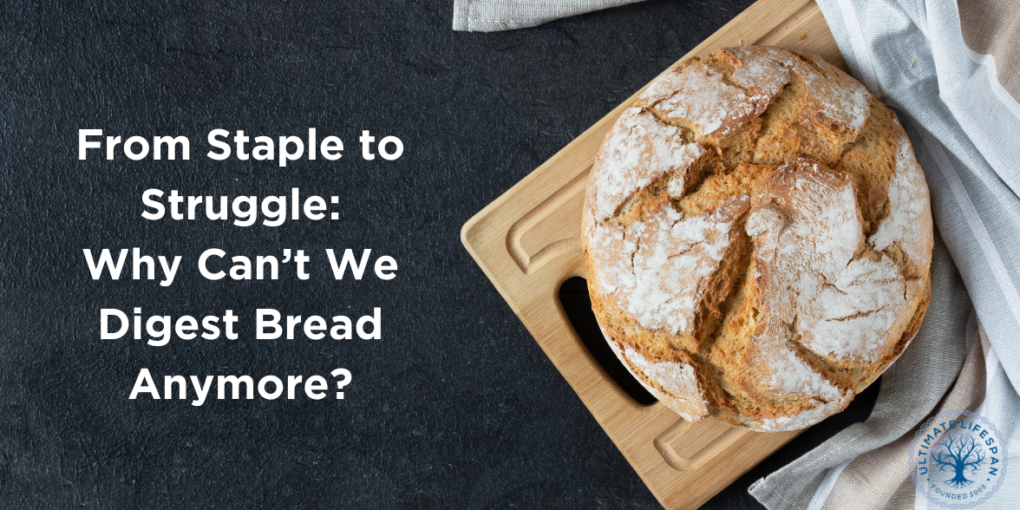How Daily Bread Became the Forbidden Food: Unraveling the Gluten and Beyond
The transformation of bread from a fundamental element of our diet to a potential health hazard is a complex tale. It's not just about gluten, a protein often accused of causing digestive woes. This shift involves an intricate web of factors, ranging from agricultural practices to modern processing techniques. Understanding this journey is crucial to appreciating why many people struggle with bread today and how we can revert to healthier, more digestible forms of this ancient staple.
The Altered Foundation: Soil and Grain Quality
The Shift in Agricultural Practices
Our story begins with the earth itself. Traditional farming methods, which respected and replenished soil nutrients, have given way to industrial practices dominated by synthetic fertilizers and pesticides. This shift has profound implications: soils are now “synthetic,” lacking the complex mix of minerals and beneficial microorganisms found in their natural state. This depletion directly affects the health of the wheat grown in these soils, resulting in grains that are not only less nutritious but also potentially more harmful.
The Transformation of Wheat
Wheat, the core ingredient of bread, has undergone significant genetic alterations. To control the food supply and produce it as quickly and cheaply as possible, scientists have developed hybrid varieties of wheat that prioritize yield and pest resistance over nutritional value. This shift in focus has led to significant changes in the grain's composition, favoring economic efficiency over the health and nutritional benefits that were once inherent in traditional wheat varieties.
This modern wheat is a shadow of its ancient counterparts, with increased and altered gluten content and diminished levels of vitamins, minerals, and other beneficial compounds. The consequence is a fundamental change in the grain's nutritional profile, making it less suitable for human consumption.
The Decline in Bread Processing
The Introduction of Chemicals and Unwanted Additives
The inclusion of additives like potassium bromate and the use of chemicals such as glyphosate in wheat cultivation and bread-making raise serious health concerns.
Potassium bromate, often used in bread-making to strengthen dough and improve rise, has been linked to various health issues. It is considered a potential carcinogen, with research suggesting it may increase the risk of cancer. Moreover, its use is banned in several countries due to these health risks.
Glyphosate, a widely used herbicide in wheat harvest (it is most often used as a desiccant), is another significant concern. Its presence in the final wheat product has been associated with various health risks, including potential endocrine disruption and a possible increased risk of certain cancers. It also directly affects our gut microbiome, which quite literally acts as a foundation for our overall health. The use of glyphosate has sparked a global debate about its safety, especially considering its prevalence in modern agriculture and its potential residues in food products.
These chemicals, so typical of modern food practices, exemplify the shift away from natural, health-focused farming towards methods that prioritize efficiency and profit, often at the expense of consumer health.
The Mold Issue and Overprocessing
Another concern is mold growth in stored grains. Mycotoxins produced by mold can lead to a range of health issues and are particularly problematic in poorly stored or processed grains. Additionally, the modern bread-making process often involves excessive mechanical processing, which strips away the natural nutritional value of the wheat. Synthetic nutrients are sometimes added back, but these are no substitute for the naturally occurring vitamins and minerals lost in the process.
The Compounding Effect of GMOs and Baking Techniques
Genetically modified organisms (GMOs) have been introduced into the bread-making process, further distancing bread from its natural origins. In addition, contemporary baking methods, often designed for speed and convenience rather than health, fail to mitigate the issues introduced earlier in the process. These methods lack the beneficial aspects of traditional baking, such as longer fermentation times, which can make bread more digestible and nutritious.
The Culmination: A Digestive Health Disaster
The cumulative effect of these changes—from soil depletion to genetic modification, from harmful additives to rushed baking methods—is a product that barely resembles the nutritious staple bread once was. It's a far-reaching transformation that impacts not just gluten content but almost every aspect of bread's composition and nutritional value.
The Path to Rediscovery: Ancient Grains and Traditional Methods
Reviving Ancient Grains and Organic Farming
The key to reclaiming bread's healthful legacy lies in a return to ancient grains like einkorn, emmer, and spelt. These grains, cultivated using organic farming methods, are inherently more nutritious and naturally lower in gluten. By embracing these ancient varieties and the rich, fertile soils they thrive in, we can produce wheat that is both nourishing and sustainable.
The Renaissance of Traditional Bread Making
The art of traditional bread-making, particularly the use of stone-ground flour, is essential in this revival. This ancient method of grinding preserves the nutritional integrity of the grain, ensuring that the flour retains its full spectrum of vitamins, minerals, and fiber. When combined with traditional fermentation processes, such as those used in sourdough bread making, the result is a product that is not only rich in flavor but also more digestible and nutritious.
Sourdough: A Symbol of Digestive Harmony
Sourdough bread represents the pinnacle of this traditional approach. The natural fermentation process involved in sourdough production breaks down gluten and phytic acid, making it gentler on the digestive system. This process also enhances the availability of nutrients, making sourdough a healthy choice for those sensitive to modern bread.
Conclusion: Reclaiming Bread's Nutritive Heritage
The journey of bread from a nutritious staple to a source of health concerns is an intricate one. It encompasses changes in agricultural practices, grain genetics, processing methods, and baking techniques. By understanding these multifaceted transformations, we can make informed decisions about our bread consumption and enjoy it again.
Opting for bread made with ancient grains, processed traditionally, and free from harmful additives allows us to enjoy this age-old staple in a way that contributes positively to our health. It's a call to challenge the narrative set by large food corporations and to rediscover bread's true potential as a nourishing part of our diet. Our stone-age bodies cannot thrive on modern processed food.



